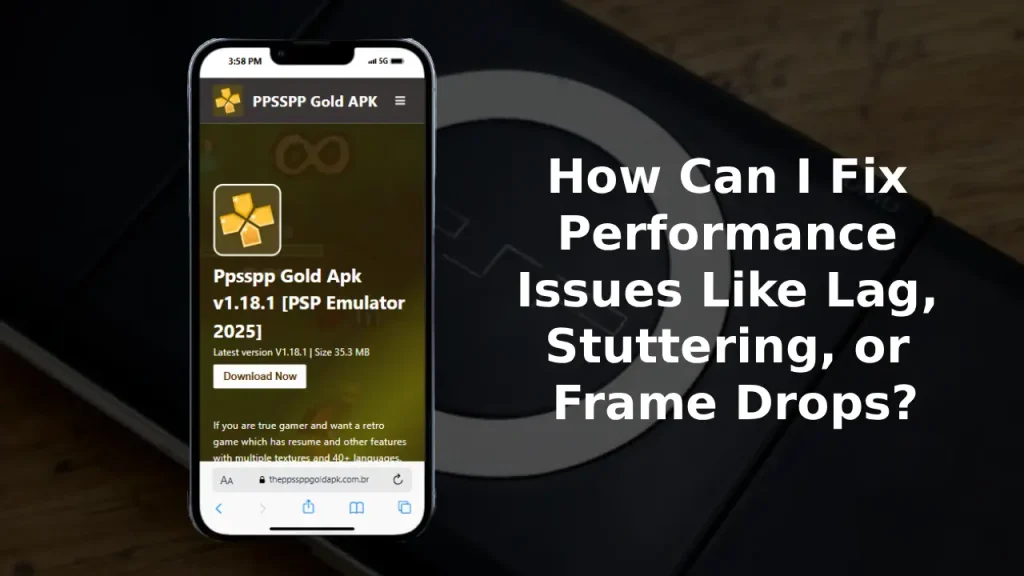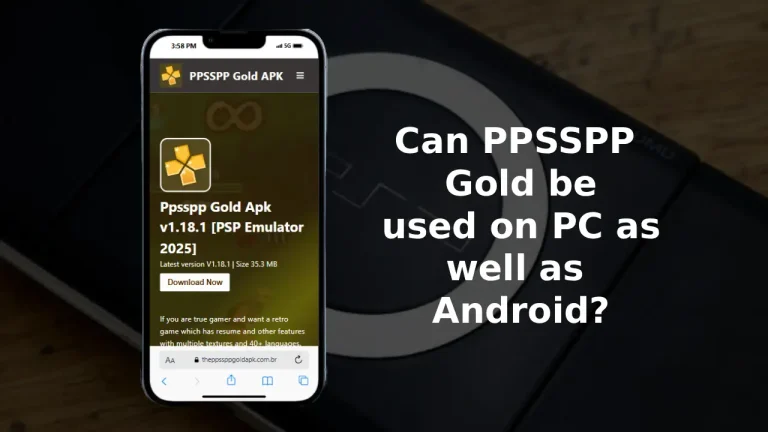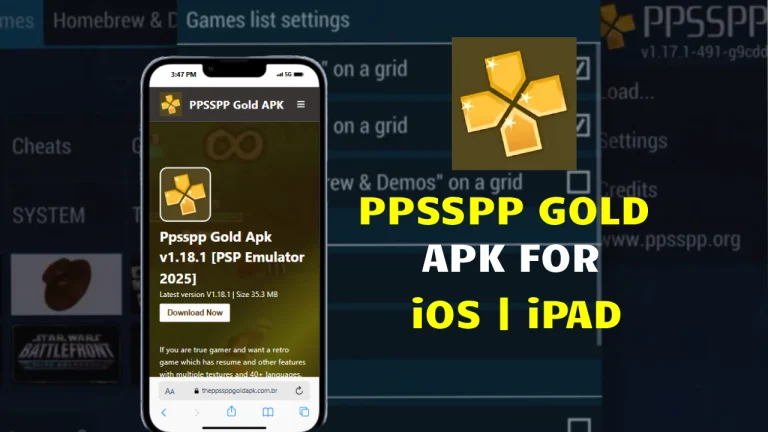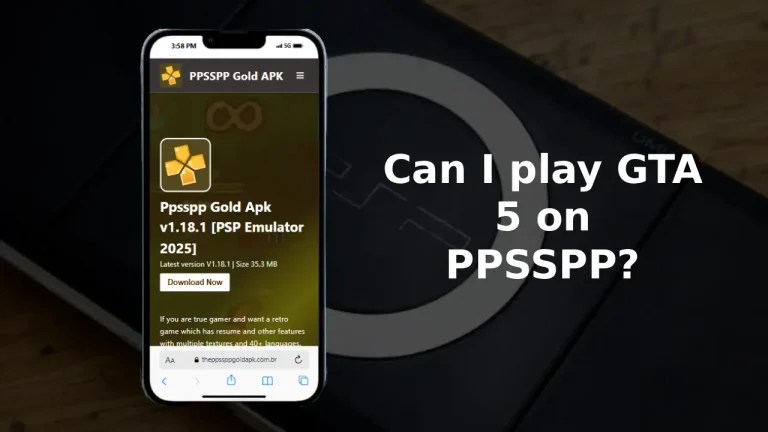How Can I Fix Performance Issues Like Lag, Stuttering, or Frame Drops?
If you’ve ever been in the middle of an intense gaming session only for the screen to freeze or the frame rate to dip, you know exactly how irritating it can be. You tap, swipe, or click—and the game responds a second too late. Whether you play on a phone, laptop, or console, lag and stuttering can ruin the whole experience. Many players start by wondering, how can I fix performance issues without buying a new device? The good news is, you often can.

Sometimes even small tweaks—like adjusting settings or managing background apps—bring an instant improvement. If you use an emulator, it also helps to know little tricks such as can I attach external controller with ppsspp android device for smoother control. Let’s break down the practical ways to fix game lag, improve FPS, and keep gameplay consistently smooth.
How Can I Fix Performance Issues?
1. Why Performance Problems Happen
Every game, no matter how simple, pushes your hardware to work hard. When your phone or PC struggles to keep up, you start seeing lag, dropped frames, or delayed actions. It could be an outdated driver, a background update, or simply the system running too hot.
To truly answer how can I fix performance issues, you first need to pinpoint the cause. Are you on Wi-Fi or mobile data? Is your storage almost full? Even a cluttered hard drive or full cache can trigger slowdowns. Once you know the culprit, the fixes become a lot more straightforward.
2. Optimize Graphics Settings
Many gamers jump straight to “ultra” graphics because it looks great, but those settings can crush performance. The easiest game optimization tip is to lower resolution and effects. Try disabling motion blur, anti-aliasing, or ambient shadows.
On PC, explore the pc version settings menu—many titles let you choose performance or quality presets. Pick performance first and then gradually increase quality until you find the sweet spot.
Mobile players can also benefit from lowering resolution or frame rate limits. These adjustments help fix frame drops and often double FPS instantly. It’s surprising how little visual difference you notice once the gameplay feels smoother.



3. Keep Your Device Updated and Clean
Software updates aren’t just for new features; they often carry performance boost for Android/iOS/PC fixes too. On Windows, update your graphics drivers and check for OS patches. On phones, clear cached data regularly and uninstall apps you don’t use.
A full storage drive or overloaded background can easily slow down any system. If you play a lot of mobile games, clear cache to improve performance at least once a week. Some phones include a “game booster” option—turn it on to automatically reduce background apps and allocate more memory to the game.
These small steps alone can make a massive difference when you’re asking yourself, how can I fix performance issues without expensive upgrades.
4. Watch Your Hardware Health
Even the best software setup can’t help if your hardware is struggling. Dust buildup, old thermal paste, or poor ventilation cause overheating, which instantly throttles performance.
For PC players, regularly clean fans and make sure there’s proper airflow. Use tools like MSI Afterburner to reduce CPU usage while gaming and monitor GPU temperature. For mobile gamers, don’t play while charging—heat kills performance fast.
If you’re using older versions of certain apps or emulators, they might not be optimized for your latest system update. Reinstalling or updating those versions can fix graphics lag and unexpected freezes.
5. Fix Network and Online Lag
Not every lag comes from graphics or hardware—sometimes it’s your internet connection. Multiplayer titles depend heavily on stable ping and low latency.
For desktop or console gamers, plug in an Ethernet cable instead of relying on Wi-Fi. Wired networks offer far less packet loss and reduce input delay dramatically. If you must use Wi-Fi, move closer to the router and disconnect other devices.
Mobile players should compare Wi-Fi vs mobile data performance; sometimes a strong 4G or 5G signal works better than a weak home network. In online matches, close apps like YouTube or Instagram in the background—they quietly eat bandwidth and cause network latency and ping issues.
6. Adjust Advanced Settings
Modern games offer a lot of customization if you know where to look. Experiment with vsync and frame rate settings—turning V-Sync off can remove stutter in many titles. Update DirectX or Vulkan for newer rendering support, and don’t forget to optimize RAM and storage usage.
Windows gamers can also tweak “Game Mode” and “Hardware-accelerated GPU scheduling.” Both help balance resources efficiently.
If you’re on mobile, switch your phone to “performance mode settings.” Disable live wallpapers, reduce animations, and avoid multitasking while gaming. For the iOS version of any app, close all background apps before launching a heavy title; iPhones handle memory differently, and freeing RAM prevents frame skips.
7. Address App or Game-Specific Problems
Sometimes the lag isn’t your fault—it’s a bug inside the game. If you notice performance drops after an update, check online communities or the developer’s patch notes. Many studios release quick fixes for fix stutter in high-end games or to fix lag in online multiplayer games.
Reinstalling can also work wonders, especially if data files got corrupted. Don’t forget to back up your progress first. Keeping your GPU driver current and testing performance mode settings per title will help you identify the most stable configuration.
8. Safety and Maintenance Habits
While optimizing, it’s easy to get tempted by “FPS booster” apps or registry tweaks you find online. Be careful. Stick with official tools—NVIDIA GeForce Experience, AMD Adrenalin, or built-in game boosters are safe.
Avoid overclocking unless you understand what you’re doing; it might give a small performance boost but can also shorten hardware life. Always keep some free storage space and avoid running antivirus scans during gameplay.
If you’re curious whether your system can handle bigger titles, like gta 5 game on low-end hardware, test it at the lowest settings first. Smooth play depends less on graphics and more on balanced system management.
9. Pros and Cons of Tweaking Settings
Pros:
- Noticeable FPS and responsiveness improvements.
- Better heat management and longer battery life.
- Reduced stutter and freezing in demanding games.
Cons:
- Visual quality may drop slightly after reducing effects.
- Aggressive tweaks can cause crashes or instability.
- Some fixes vary depending on game engine or device type.
The goal is balance—adjust enough to gain smoothness without compromising experience.
10. When It’s Time for a Hardware Upgrade
If you’ve tried every trick and the lag still persists, your hardware might simply be aging. Old GPUs, worn-out SSDs, or low RAM can bottleneck new releases. Consider upgrading piece by piece: start with RAM or switch to an SSD if you’re still on a hard drive.
For phones, look for models with strong cooling systems and higher refresh-rate screens. Even mid-range devices today offer excellent performance mode options and better heat control.
Still, remember that learning how can I fix performance issues isn’t always about new gear—it’s about keeping what you already own in its best possible shape.
Conclusion: Small Changes, Big Difference
Lag, stutter, and frame drops might feel inevitable, but they don’t have to be. Regular maintenance, mindful settings, and smart storage habits can turn a sluggish setup into a smooth one.
Whether you’re gaming on a budget phone or a high-end rig, consistency is key. Clean your device, update drivers, and fine-tune graphics once in a while. Over time, these habits create a system that performs better and lasts longer.
So the next time your game feels off, take a breath, follow these steps, and remind yourself that fixing performance isn’t magic—it’s maintenance. With patience and a few clever tweaks, you’ll keep every frame flowing like it should.






